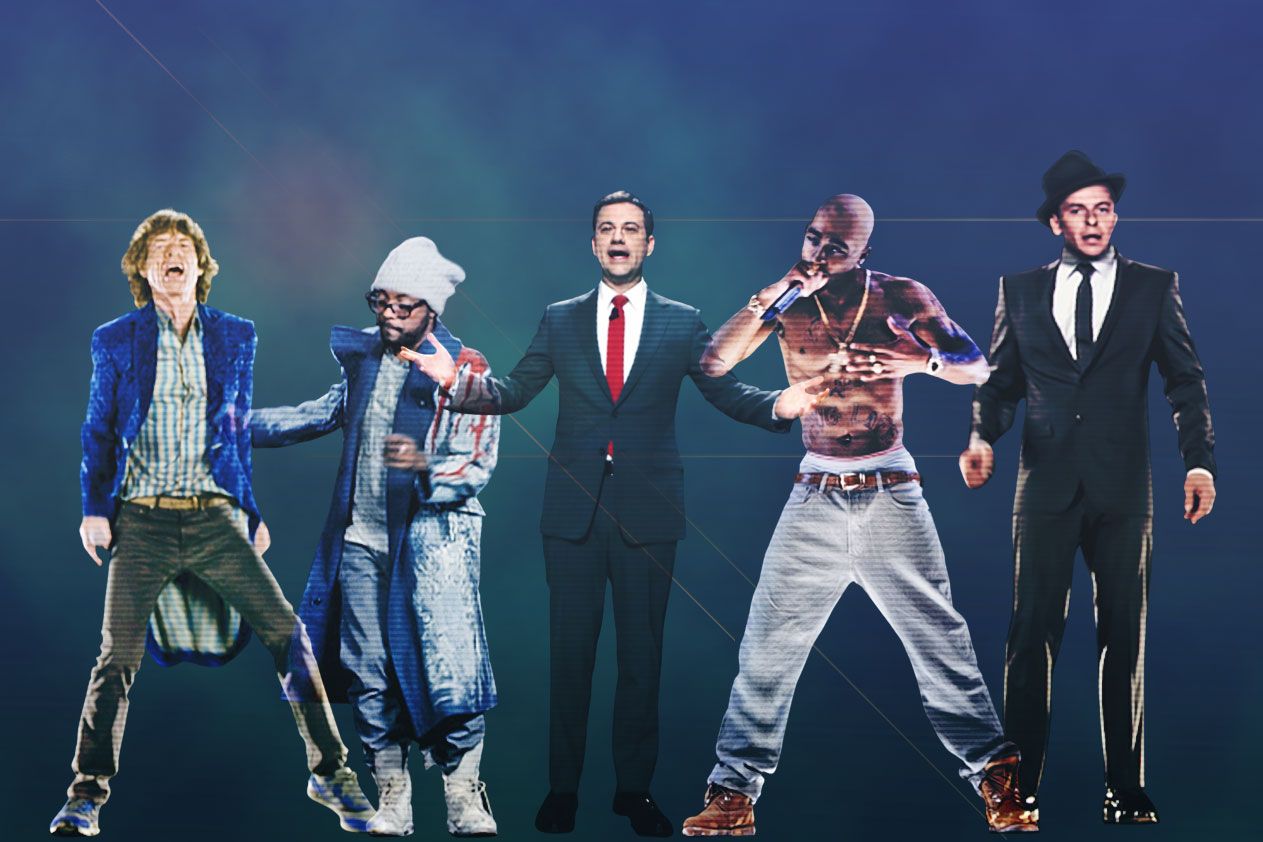Holograms in Real Life: How the Technology Works and Industry Use Cases

You all remember Princess Leia, appearing as a floating image in the early episodes of Star Wars. Sometime in the 80s, a broader audience was introduced to the word ‘hologram’.
For years, it seemed like holograms would be confined to the corner of science fiction forever. However, very recently, things have begun to change thanks to advances in optical and audio technology - and artificial intelligence (AI).
We have already seen examples of three-dimensional copies of deceased artists performing: Tupac Shakur, Roy Orbison, Whitney Houston, and many others. For AI voice cloning software to create realistic sound for a hologram, only 10–15 minutes of recording an authentic voice is enough. After that, the neural network generates a voice that considers all the possible nuances of the speaker’s voice. The result is a voice that sounds exactly like the original.
What is hologram technology?
In real life, holograms are virtual three-dimensional images created by the interference of light beams that reflect real physical objects. Holograms preserve the depth, parallax, and other properties of the original item, going far beyond what traditional communication methods like a VoIP PBX system can achieve. They are great for presenting complex technical concepts as well as showcasing visually appealing products.
So, what is a hologram? Simply put, holograms are three-dimensional images generated by interfering beams of light that reflect real, physical objects. Unlike conventional 3D projections, holograms can be seen with the naked eye.
There are two ways to create holograms: via computer - with augmented reality glasses, and physical - for optical displays. Depending on which method is used, there are two types of holograms - stereotypical and realistic.
Stereotypical holograms
The most common and recognizable example of a stereotypical hologram is Microsoft HoloLens. In 2015, Microsoft became the first company to introduce the HoloLens holographic glasses. The technology that the tech giant unveiled is widely used today to create augmented reality.
To create holograms for HoloLens, content creators use HoloStudio software. Users can import models from other services or create 3D objects themselves with the help of the app. In short, you can use HoloLens to create complex virtual objects. In turn, these objects are superimposed on the imagery of the surrounding world through the use of virtual reality glasses.
The result is an image that appears very similar to Pokemon Go. The only difference is that in HoloLens, rather than seeing fantastical dinosaurs, you are deploying a virtual workspace, an educational office, or a virtual conference with colleagues.
HoloLens makes this possible by linking AR objects with traditional computer programs for work and entertainment. Check out this short demo for more information about holographic technology.
Realistic holograms
In 1947, Dennis Gabor — a Hungarian-British physicist — developed today’s modern hologram theory while working on an electron microscope. However, optical holography didn't really advance until the advent of the laser in 1960. A laser emits a potent burst of light that only lasts a few nanoseconds.
This makes it possible to obtain holograms of high-velocity events, such as an arrow or bullet in flight. The first laser-based human hologram was created in 1967, which paved the way for numerous other applications of holographic technology.
So, how do holograms work? Holography is a unique method of photography whereby 3D objects are recorded using a laser and then restored as precisely as possible to match the originally recorded object. When illuminated via a laser, holograms are able to form an exact 3D clone of the object and duplicate its features.
In order to produce an accurate visualization of a hologram at a certain point in space, two light waves must be coordinated in motion - a reference wave and an object wave. Both are formed by separating the laser beam.
The reference wave is created directly by the light source, and the object wave is reflected from the recorded object. There is also a photographic plate on which dark stripes are "imprinted" depending on the distribution of electromagnetic energy (interference) in a given place.
A similar process takes place on ordinary photographic film. However, to reproduce an image from it, a printout on photographic paper is required. However, during the active use of hologram technology, everything happens a little differently.
To reproduce a "portrait", the photographic plate has to be "illuminated" with another light wave in close proximity to the reference wave, which converts both waves into a new wave of light that runs alongside the object wave. The result is an almost entirely accurate reflection of the object itself. For a better understanding of how holograms are produced, watch this short video.
What are some of the most common industry use cases?
Holographic technology is used in a variety of ways, across several industries. The list below includes some of the most popularized examples:
1. Telecommunications
In 2017, Verizon (USA) and Korea Telecom (South Korea) made the first holographic call using 5G technology. To make the call possible, two holograms were formed. Both fully capable of conveying the user's emotions and gestures.
2. Education
In 2015, the Nobel laureate and professor of physics at Stanford University, Karl Wieman, spoke at Nanyang Technological University (Singapore) without leaving the United States.
In 2013, St George's University of London introduced holograms capable of displaying the working organs of a human body. The presentation showcased three-dimensional images of kidneys four meters in length, a skull, and other parts of the body.
3. Spatial navigation
In 2017, scientists from the Munich University of Technology developed a method for obtaining three-dimensional holograms using a Wi-Fi router. The method described in the study allows for creating copies of premises by displaying objects around them. This technology can be used to find and rescue victims trapped under an avalanche or within collapsed buildings.
4. Marketing and direct sales
Product holograms are a new marketing ploy to grab the attention of customers. With the help of a hologram, you can enlarge a 3D copy of a product and make it viewable from all sides. This is convenient for customers who want to see their desired purchase in full detail.
In 2017, Barbie presented a holographic robotic doll that responds to voice commands. The toy was able to respond to questions about the weather and discuss other topics.
5. Music shows
A hologram of Eric Prydz's face acted as the closing of his EPIC 5.0 show in London, 2017. The performance of the popular French DJ was accompanied by an impressive laser show. At the end of the evening, over 300 lasers formed a volumetric hologram of the DJ's head. From then on, the DJ’s shows were always accompanied by the use of holograms to create a unique atmosphere.
6. The return of historical figures
In 2012, Digital Domain studio, specializing in VFX for de-aging Hollywood stars in movies, brought Tupac Shakur back to life as an exceptional 3D hologram. Using an actor and body double, they created animations for a lifelike digital avatar of Tupac. In 2014, Tupac appeared at Coachella in his digital human form.
As with Tupac or any other educational project such as creating a virtual history museum, producing holograms requires additional planning and coordination. First, these holograms are created based on the use of unique digital avatars for individuals who left us a long time ago.
Creating 3D models, animating movements, and synthesizing authentic voices is no simple task. In the case of the latter, Respeecher can dramatically reduce the cost and time span associated with reproducing an authentic voice. In other words, we can not only bring back Tupac's voice from the past, but it is also possible to create new authentic AI generated content as if the singer were still with us. Interested in learning more? Here’s how we can help.
The future of holographic technology
The future of holography lies at the intersection of AI, digital human technology, and voice cloning. The consistent increase in worldwide computing power will allow for the creation of digital human models that will render at an ever-accelerating pace that will make them more and more difficult to tell apart from real ones.
In turn, the evolution of holographic technologies will lead to their increasing availability and portability. Imagine if holographic content could one day be as accessible as streaming content: holographic cinema, holographic theater, music shows.
Augmented reality will no longer require wearing special glasses but will be directly integrated into landscape objects. We already know how holographic pedestrian crossings and holographic advertising work. But we can only imagine how our cities and lives will be changed as the evolutionary pace of technology continues to accelerate.
The AI voice generator technology developed by Respeecher allows you to create any voice you want. You determine the gender, tone, pace of speech, and even accent. To find out which technology is suitable for your project, Respeecher Studio or the Voice Marketplace, please reach out to us and a member of our team will guide you every step of the way.
FAQ
Hologram technology creates 3D holograms using light interference to reflect physical objects, preserving depth and features. Holographic displays and augmented reality applications enhance the experience, allowing interactive visuals that can be viewed with the naked eye or VR/AR devices.
Respeecher's AI voice cloning software generates realistic voices for digital humans and 3D holograms, enhancing their authenticity. By synthesizing voices from minimal recordings, Respeecher provides the vocal element needed for lifelike synthetic media in holographic presentations and AI-powered holography.
Industries like telecommunications, education, marketing, and music are benefiting from holographic displays and virtual reality integration. These innovations are used for remote communication, immersive learning, spatial navigation, and holographic performances in entertainment.
AI-powered holography combines AI voice cloning and digital human technology to create dynamic and lifelike holograms. With augmented reality applications and 3D holograms, AI ensures accurate voice, gestures, and real-time interaction, making virtual experiences more realistic and engaging.
Ethical concerns with hologram technology and AI voice cloning include consent, privacy, and misuse of synthetic media. Ensuring that digital avatars and voice clones are used responsibly requires transparent AI voice changers and safeguards to prevent identity theft, deepfakes, and exploitation.
Glossary
Holographic Displays
Advanced hologram technology that projects 3D holograms into space, enabling interactive synthetic media, AI-powered holography, and augmented reality applications.
AI Voice Cloning Software
Synthetic Media
Digital Human Technology
Creating lifelike digital humans using AI voice cloning software, 3D holograms, and virtual reality integration for synthetic media and augmented reality applications.
3D Holograms

- holograms
- hologram technology
- virtual reality
- augmented reality
- how do holograms work
- how are holograms made
- artificial intelligence (AI)
- holographic technology
- hologram meaning
- holograms in real life
- are holograms real
- voice cloning technology,
- AI voice generator
- AI voice cloning
- Respeecher for Business
- Influencers





